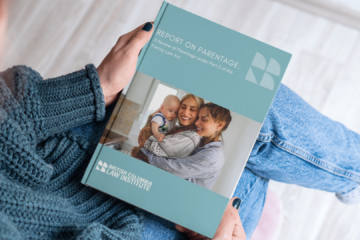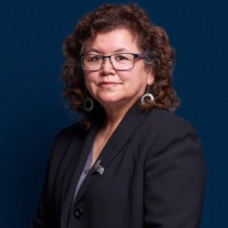Analysis of the BC Safe Care Act Bill
July 15, 2019
BY Sara Pon
Overview
In BC, there is currently a private member’s bill, the Safe Care Act, 2019, in the legislature which proposes to create a form of secure care for children and youth who are experiencing substance use or are being sexually exploited. This bill would allow for the child to be apprehended pending a hearing on whether the child should be subject to a longer 15-30 day detention aimed at getting them treatment. The legislative history of secure care in British Columbia and the details of the 2019 bill will be discussed below, followed by a summary of the criticisms of secure care.
Legislative History
Legislation aimed at creating some form of apprehension and secure care for children and youth experiencing substance use or sexual exploitation is currently on its fourth iteration. Bill 25 – 2000 Secure Care Act was brought forward as a government bill in 2000, and received Royal Assent on July 6, 2000. The act was never put into force, however.
In 2017, a private members bill was brought forward, Bill M 240-2017, Safe Care Act, 2017, but did not move beyond First Reading stage. In 2018, a private members bill was brought forward, Bill M 202 – 2018 Safe Care Act, but also did not progress beyond the First Reading stage. The current version of this proposed legislation, Bill M 207 – 2019 Safe Care Act, 2019 was brought forward as a private members bill in the current session of the legislature. The 2019 bill has currently passed First Reading. These three bills appear, on a cursory analysis, to be the same. The 2017, 2018, and 2019 bills are substantially similar to the original Secure Care Act bill from 2001, with a few key differences.
Bill M 207 – 2019, Safe Care Act, 2019
The current bill on secure care was brought for first reading on March 27, 2019. In the debates, the MLA introducing the bill stated that this was brought forward to deal with the current problem of drug overdoses in the province. The MLA stated the purpose of this bill is to allow for children to be apprehended when the youth are at a high risk of harm due to “issues of mental health, substance use, sexual exploitation or partner violence”. The MLA notes that while voluntary services are the most effective, and should be the preferred method, she believes that these approaches are insufficient and this bill would allow for children to receive assistance when they are incapable of informed consent due to their substance use and the fact that their brains have not finished developing.
Safe Care Application
This bill would allow a parent, adoption director, child and family services director, or a safe care director to apply for an apprehension order for a child or youth who is between 12 and 19 and is a “child at risk of serious harm”. A “child at risk of serious harm” is “a child (a) who is or is likely to be commercially sexually exploited, or (b) who is suffering from severe drug misuse or addiction”.
Apprehension Order
The applicant must obtain leave from the court to apply for an apprehension order. The applicant can ask for an apprehension order if the child is at risk of harm and there are no less intrusive measures available. A hearing is to be held within three days, with notice given to several parties, but there is no requirement to notify the child or youth at this stage. The court is to consider whether an order would be in the child’s best interests and whether the child would voluntarily engage in treatment or not. If the court makes an apprehension order, the child would be apprehended and taken to a safe care facility until the stabilization and assessment order hearing. Upon apprehension, the child would be notified about why they are being apprehended and told they have a right to counsel.
Stabilization and Assessment Order Hearing
The stabilization and assessment order hearing is to be conducted within 48 hours of the apprehension. At the hearing, the court will either:
- order the child to be discharged to the appropriate individual such as their parent, or
- grant a stabilization and assessment order which would mean the child is detained for up to 15 days
A stabilization order can only be granted if the child would be at serious harm, and no less intrusive measures are available or adequate. This stabilization and assessment order can be extended for up to 30 days.
The Safe Care Director
The safe care director is granted some miscellaneous powers to carry out their duties. In order to follow through with these orders, the safe care director can obtain police assistance in apprehending the child, and can be granted the power under a warrant to allow the safe care director and police to enter private property. The safe care director also does not have to name the child or give proof of their age during the order hearings if the safe care director is able to describe the child adequately. The safe care director can search the child when they enter the facility or if the director believes the child has evidence or contraband on their person or in their room. Additionally, the safe care director may restrict, intercept, and monitor the child’s communications. The safe care director is required to create a community service plan with the child for the purposes of preventing re-apprehension which must include services the child can access in the community.
Rights of the Child or Youth
The bill outlines several rights that the child has during this process. The safe care director must tell the child about the representative and ombudsperson, and their right to request a review. Other rights include the right to an interpreter, to receive health care, to be consulted with, and to be informed of their rights.
Discharge from Safe Care
The safe care director must discharge the child under the following circumstances:
- the child is no longer at serious risk of harm due to the originating circumstances changing; or
- less intrusive measures have become available.
Criticisms of the Secure Care Bills
The criticisms of these bills, and of similar legislation from in other provinces, identify concerns in the following areas:
- the potential for disproportionate impact of secure care on women and indigenous youth;
- the lack of procedural limits;
- the lack of funding for, or presence of, non-coercive methods for reducing substance use and sexual exploitation; and
- the lack of empirical evidence on the effectiveness of a secure care approach.
Disproportionate Impact on Women
Secure care legislation has been criticized by multiple sources as being discriminatory towards women, especially as this bill would allow for women under 19 who are engaged in prostitution to be apprehended. This criticism is based partly on the data from Alberta’s Protection of Children Involved in Prostitution Act (now entitled Protection of Sexually Exploited Children Act, RSA 200, c P-30.3), which allows children and youth who are sexually exploited to be apprehended and placed in a form of secure care. The BC CEDAW Group report British Columbia Moves Backwards on Women’s Equality and Jennifer Koshan1 note that over 95% of those apprehended under this legislation were women. Jennifer Koshan noted that this legislation would further the harms against women because fear of being apprehended could cause the women to move into more hidden and risky forms of prostitution or avoid engaging voluntarily in support services. Additionally, the Alberta legislation has the effect of regulating rather than reducing or protecting girls from prostitution. Ending Violence BC, in their analysis of the 2017 BC bill, notes that women were not consulted in drafting this legislation, which they say needs to be done as the BC legislation impacts women’s equality.
Disproportionate Impact on Indigenous Youth
Secure care legislation has also been criticized for the disproportionate effect it would have on Indigenous youth. Jennifer Koshan’s article notes that in Alberta, 30% of those apprehended were Indigenous youth. Pilarinos et al in their article state:
The legacy of colonization has resulted in an overrepresentation of Indigenous youth within the child welfare and criminal justice systems, suggesting that Indigenous youth may be particularly vulnerable to secure care measures. The forced care of young Indigenous people who engage in substance use may represent a continuation of colonial policies and state repression of Indigenous Peoples.2
The BC CEDAW repot and Ending Violence BC echo concerns that the BC legislation would be a continued colonial oppression measure against indigenous youth and recommend focusing on non-coercive measures.
Lack of Procedural Limits
Secure care legislation has been criticized for lacking sufficient procedural limits. The BC Civil Liberties Association, in a letter written when the government was considering this legislation, argued that given the fact that this legislation would impinge on liberty rights, there should be limits placed on secure care, such as only using it in limited, emergency situations, and ensuring the length of apprehension is as short as possible. Ending Violence BC noted that the Mental Health Act already has a procedure in place to allow for care of vulnerable youth which already contains procedural safeguards such as reviews of the involuntary admission, so secure care may not be necessary.
The move towards secure care has also been criticized for the fact that this moves attention away from voluntary services. Both the BC Civil Liberties Association and Ending Violence BC note that there are insufficient voluntary services, especially in certain areas of the province. These organizations argue the time and money that would be put into secure care could be better spent on increasing services and building relationships with vulnerable youth with the aim of increasing their uptake of voluntary services.
Lack of Empirical Evidence on Effectiveness
Lastly, authors have noted the lack of empirical evidence that secure care is effective at addressing substance use or sexual exploitation. Pilarinos et al reviewed the literature on the effectiveness of mandatory treatment and found that in both the youth and adult population, studies have failed to find improvements during or after mandatory treatment. Additionally, the authors note that mandatory treatment can have other negative effects, such as increased overdoses after treatment, and compromised trust in the health system, which can reduce the uptake of voluntary services. Ending Violence BC also noted the lack of evidence on secure care and noted that fear of apprehension can lead to the youth avoiding treatment. Both authors argued for the focus to be put on voluntary treatment which already has an empirical foundation. The BC Civil Liberties Association suggested the government review the outcomes in other provinces which already have secure care before proceeding with legislation in BC.
Endnotes
1 Jennifer Koshan, “Alberta (Dis)Advantage: The Protection of Children Involved in Prostitution Act and the Equality Rights of Young Women” (2003) 2 LJ & Equality 210.
2 Andreas Pilarinos, Perry Kendall, Dayna Fast, & Kora DeBeck, “Secure Care: More Harm than Good” (2018) 190:41 C Medical Association J E1219.












































